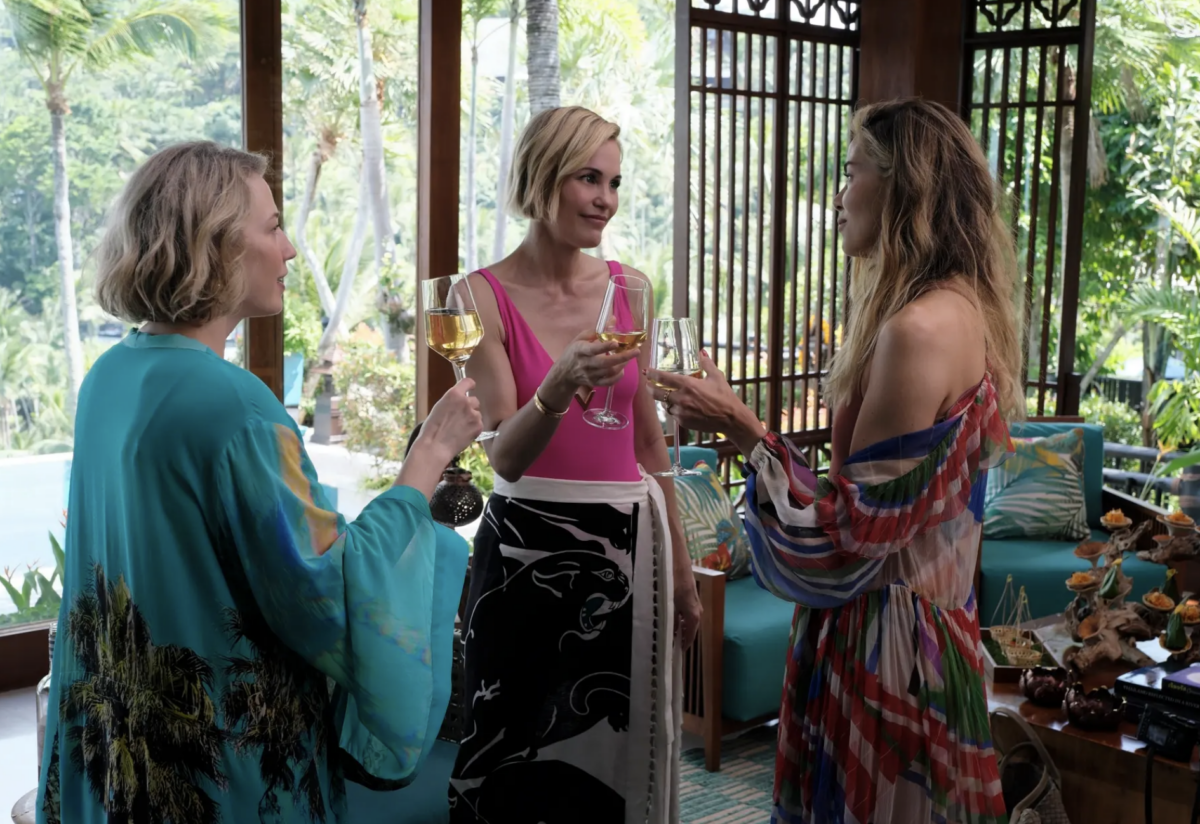LOS ANGELES, California—Joseph “Pepe” Rodriguez, 81, admits he’d become “a semi-recluse” before venturing from his apartment last spring to the clunking sounds coming from a recreation room at the Piedmont Senior Apartments in North Hollywood.
At first he waved off the white-haired women beckoning him to join their creative drum circle. “I’m too old for that,” he replied. But one of the women called, “Sit down, old man. We’re all over 80.”
He now credits the experience with helping him emerge from his shell and connecting with his fellow residents. Not only did Rodriguez sit down and pick up a drum, but “I got carried away,” he chuckled — and wowed everyone within earshot.
In the late 1940s, Rodriguez played New York with top Latino musicians, such as the celebrated Puerto Rican bandleader, Tito Puente. Although he went into the garment industry to support his family, he continued to hang with such eventual music greats as Cal Tjader and Mongo Santamaria after moving to Los Angeles around 1960.
Rodriguez is one of over 4,000 low- and moderate-income seniors benefiting from free creative-aging activities, such as drum circles, developed by the nonprofit EngAGE, which offers arts and fitness classes at 20 affordable-housing developments around Los Angeles.
Research shows arts improve health
Research in recent years shows that such activities as those EngAGE provides, offer older adults more than pleasant pastimes. Creativity classes in art, music—even computer “brain games”—may substantially cut America’s staggering health bill at a time when the U.S. senior population is expected to double to more than 70 million.
A 2011 report for the National Center for Creative Aging, at George Washington University, in Washington, D.C., found that among the few studies done to date, there was a striking reduction in the use of physical and mental health services.
The report’s author, Melissa Castora-Binkley, a senior analyst at Cleveland’s Benjamin Rose Institute, observed that even though the arts “have been used for healing purposes for centuries, the general body of research evidence that explicates their benefits is relatively scant.”
In her search of 2,205 professional journal articles mentioning aging and the arts, Castora-Binkley identified merely 11 that examined the effects on seniors participating in professionally run arts programs. But those studies revealed that elders in such programs yielded lower rates of doctors visits, hospitalizations, medication use and interventions for treatable depression or other mental distress.
In Los Angeles, one affordable-housing developer, Century Housing, decided to contract with EngAGE to provide its federally required senior activities after the company calculated the arts organization would save it $18 million annually. Century Housing found that involvement in EngAGE activities would diminish the use of higher treatment levels, such as nursing home care, by 25 percent for its 500 residents.
In fact, the National Endowment for the Arts named EngAGE an Exemplary Program for Best Practices in Lifelong Learning, one of only 10 so recognized in the nation. Recently, EngAGE received $125,000 when its founder and executive director, Tim Carpenter, was honored with a 2011 James Irvine Foundation Leadership Award.
Never ending boredom
Carpenter, a former journalist, established EngAGE in 1999. While working for a health care company, he met a senior, who had been renowned in his field. “He was an amazing person now stuck in a life of never ending boredom at this healthcare facility. At that moment, I felt a sense of responsibility to do something to make life a little better for people like him.”
He added, “I could be him someday.”
Starting out by teaching one writing class, Carpenter wanted to bring lower-income seniors the kind of courses found at the college level — not mind-numbing exercises like “gluing Popsicle sticks together.” EngAGE’s classes aim to spark seniors’ creative juices, culminating in an event, such as a performance or art exhibition, to celebrate their sense of accomplishment.
Although Carpenter had taught college courses and had plays produced, initially he found himself with a group of students in their 70s and 80s, who had “no idea of what to do in a class like this.”
His key to working with them came from an African American senior, who said she wanted to become a griot for her family and community, an African term signifying an elder who passes a legacy on to the next generation. “That gave me a purpose-driven idea for the classes,” Carpenter said.
At the conclusion of one early course, Carpenter recalled, “We gave an evening of senior stories. There were seniors of all colors involved. It was a culminating event for them, and we used that to get others. They were our poster elders.”
Today, about 40 EngAGE artists and staff, most part-time, bring programs to 20 senior residences around Los Angeles, with 10 more to start in the end of 2012. The program has nearly tripled the number of seniors involved in activities from 22 percent before EngAGE began to 59 percent today.
Two-thirds of those living in these subsidized homes, Carpenter said, are widows in their late 70s, with incomes falling at the federal poverty line. The total EngAGE service population reflects the ethnic quilt of Los Angeles, with African Americans, Asian American, Latinos, white Americans and an immigrant marble cake of Russians, Eastern Europeans, Armenians, Middle Easterners and others.
Particularly important is that fewer than half the residents still own a car and less still drive. “Besides the cost of classes offered elsewhere, for many of these seniors, getting to a senior center can be an all-day expedition in Los Angeles,” said Maureen Kellen-Taylor, who heads EngAGE’s operations.
What has established EngAGE as a national innovator in high-quality arts programming for seniors is that it is largely self-sustaining. In order to qualify for federal tax credits and related benefits, affordable-housing developers need to offer seniors activities.
Carpenter explained that developers contract with EngAGE for periods of seven to 10 years at $6,000 to $36,000 per year, depending on the size of the residence and other factors. EngAGE raises additional money through traditional fundraising.
Although the economic slump has sharply reduced new affordable housing projects, Carpenter is determined to find new financing, from private investors or teachers unions, for example, which invest in real estate, such as senior living complexes.
The doughnut ban
The British-born Kellen-Taylor, who grew up in Guyana, West Indies, joined the program in 2002. One of her first tasks, she said, predictably alienated the seniors.
“I saw that too many of the residents were sedentary, overweight people. They were fat and came to programs for the donuts and coffee. So I immediately made myself very unpopular by banning doughnuts.”
She expanded fitness programs, partly by prodding the seniors’ competitive spirit through a new Step-by-Step exercise program. Not only did many older women come, but they joined the classes, too.
Other programs followed, such as a special EngAGE version of Senior Olympics. It includes athletic outside events and inside competitions, which include crafts, fine arts and performance — everything from dance to standup comedy.
Kellen-Taylor and the staff also realized that nutrition was a continual issue. “We found that low-income seniors don’t always have much food left at the end of the month, so we worked with the Orange County Food Bank.”
More than receiving food for their own needs, she said, “the seniors also gain satisfaction from volunteering to bag food for local families.”
Kellen-Taylor explained that the senior residences proved to be convenient distribution points for low-income neighborhoods. “Last year were able to get 94 tons of food to distribute through five senior communities,” she said.
Intergenerational programs bringing seniors together with children or youth have been especially successful. For example, at one location EngAGE created programs with troubled teenagers, who attend the Burbank Community Day School next door.
“These are kids who don’t trust society,” said Carpenter. “They were considered ‘bad kids,’ kids sent there by a society that thinks there’s no reason to care for them. The seniors aren’t their parents, or police or probation officers. They took them on their own terms.”
The language of the arts
Transcending the barriers of language and culture “can be tough,” Carpenter said. “We immerse our staff in cultural diversity. We’ve had to adapt our hiring practice and look at staff with bilingual experience, working across cultures.”
Carpenter concedes that he only speaks English — and the language of the arts. “What works for us is to mitigate cultural differences by working with the unifying elements of art, fitness and music, and to celebrate in ways where language is out of the picture,” he explained.
For example, two older women – one Egyptian and the other Filipina – discovered in a dance class that songs from their youth had the same rhythms. The discovery led them and others to share stories of the worlds that nurtured them.
And in a drum circle, such as the one that coaxed Pepe Rodriguez out of his shell, two Korean elders struck on a rhythm each used to wash clothes by beating them with rocks in a stream.
As for Rodriguez, inspired by EngAGE, he recently decided to become the lunchtime DJ at Piedmont Senior Homes. In recent years he’s borrowed records from the local library – jazz, pop, classical – and converted them to CDs.
“It’s very gratifying for me,” Rodriguez said. He’s even taking requests and searches the library for music familiar to some of the Armenian and Russian seniors, who come downstairs to tap their feet over lunch, letting bygone melodies drift into memories of life in many lands.










































